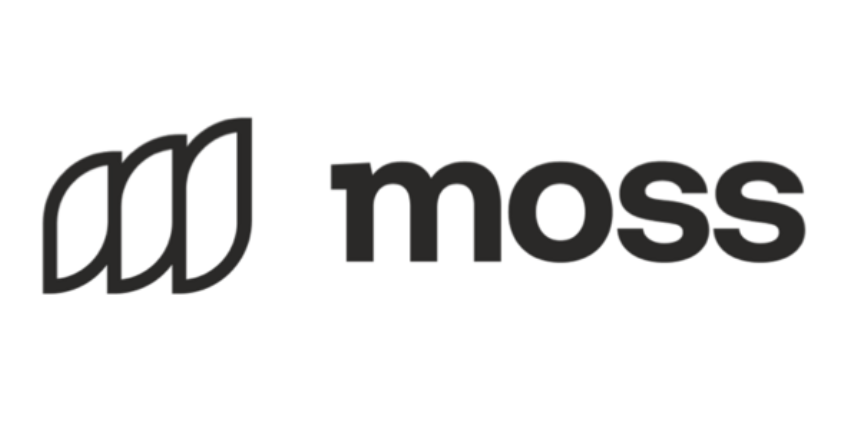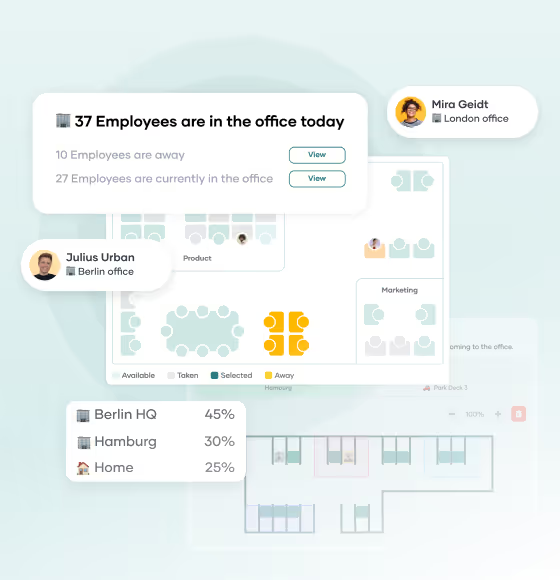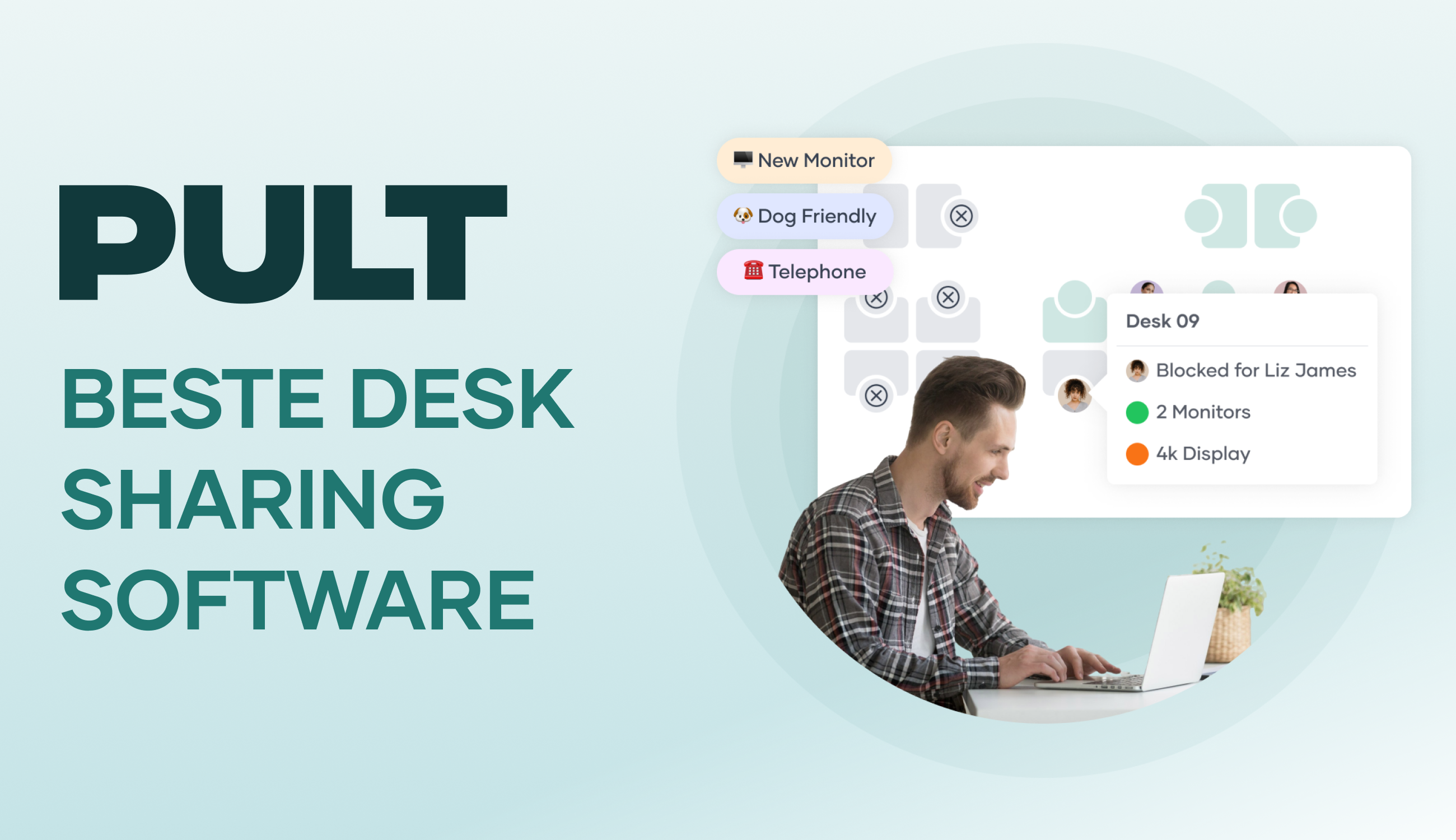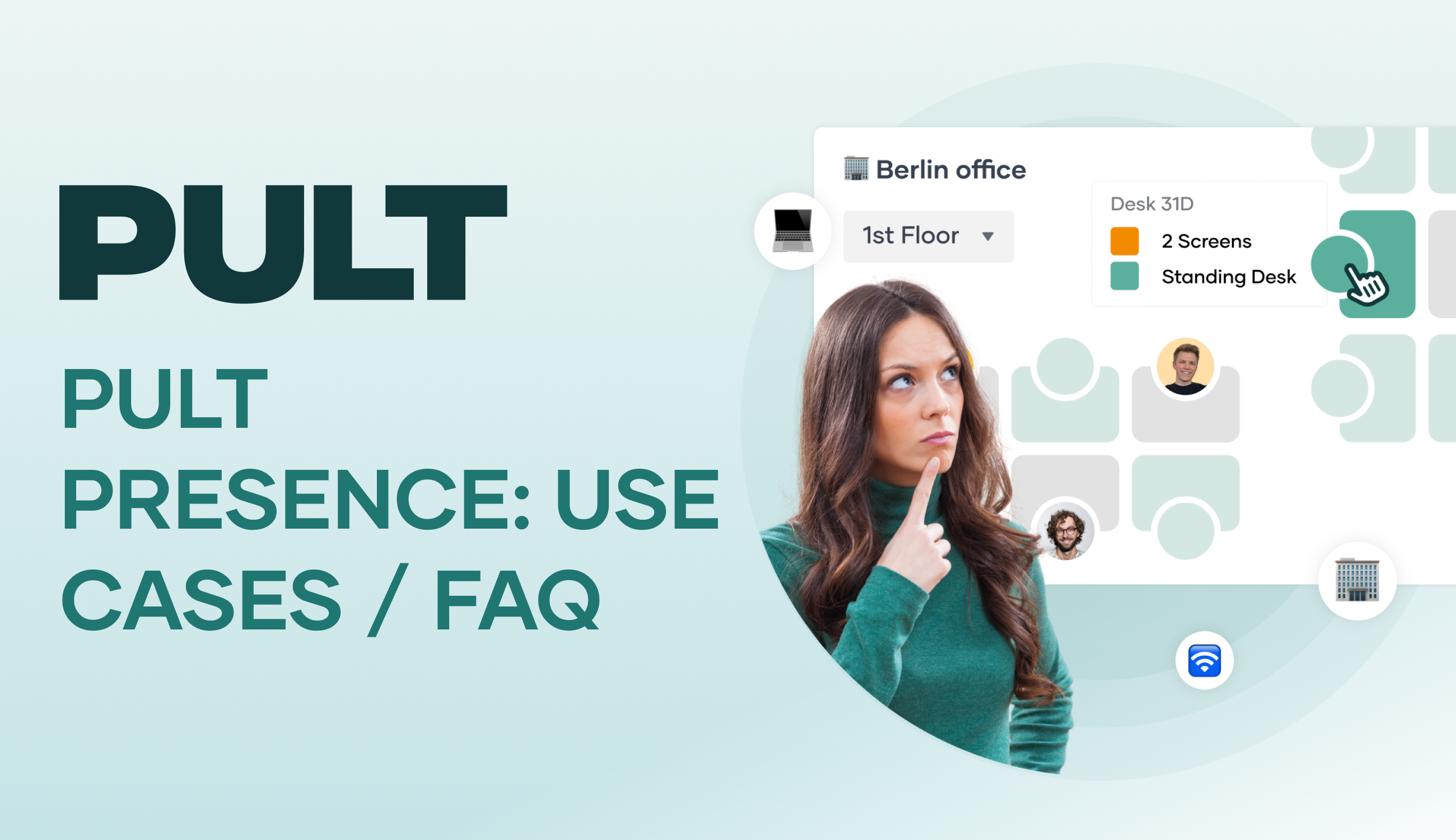Agile Workplace Explained: Interaction Between Spaces, Work Equipment, and Culture

Agile Workplace: TL;DR
- An agile workplace is an office with different zones for concentration, collaboration and exchange, as well as relaxation and balance.
- Activity-based working is the most common model of the agile workplace: the activity determines the chosen workplace within the agile workplace.
- Many large companies use agile workplaces to strengthen collaboration among employees and make targeted use of the available space.
- Studies show that an agile workplace works best with quiet areas, clear rules for allocating space, and accompanying change management.
- With the agile workplace management software PULT, space allocation in the agile workplace can be managed easily and fairly.
What is an agile work environment?
The term agile workplace refers to the entire work environment, i.e., the office with all its equipment and the way teams work and interact with each other. An agile workplace creates conditions that allow work to be organized and completed in line with daily requirements.
- Spaces: Instead of fixed seating arrangements, the agile workplace consists of different areas. There are individual workstations for quiet and concentrated work, open spaces for workshops and teamwork, and meeting rooms that can be quickly set up depending on the size of the team and the task at hand.
- Work tools: The work tools in the agile workplace are designed for constant collaboration. This includes cloud software that is shared and synchronized across devices. Content that has already been developed can be shared and edited together. The hardware is also designed with this in mind, with laptops and tablets being used instead of permanently installed desktop computers.
- Culture: The Agile Workplace also refers to the team's attitude toward their own work. Everyone takes responsibility for their part of the work and the team's performance. Work performance is evaluated based on results and no longer on hours of attendance. Rooms, structures, and processes are continuously evaluated to determine whether they still meet the objectives. Changes are easy to make and are encouraged.
Why do companies work in an agile workplace?
The general pressure on companies to perform and reduce costs has increased since the pandemic and due to Trump's tariffs, meaning that working methods and premises are constantly being reviewed.
In order to remain competitive or even a pioneer, the workplace must offer employees the best possible conditions for their performance. The agile workplace is one answer to this, and activity-based working is often the model of choice.
Example of activity-based working in the agile workplace
The Dutch insurance company Interpolis has completely redesigned its offices based on activity-based working. Since then, there are no longer any fixed desks, but rather different areas for different activities: individual workstations for concentrated work in quiet zones, open spaces for workshops, and retreat areas. The result: 45% less office space and 24% lower annual occupancy costs.
Studies show that open-plan offices tend to slow down communication between employees. In some cases, direct communication fell by almost 70 percent because employees resorted to emails or chat.
An agile workplace, on the other hand, focuses on diversity of zones: places for retreat, places for exchange, places for short ad hoc meetings. Only this combination prevents the agile concept from falling by the wayside in everyday working life.
Companies are turning to the agile workplace because it makes office space usable for new and better work areas. These new areas help employees cope with the sometimes high pressure to perform and enable them to adapt their working methods to the task at hand on a daily basis.
How is an agile workspace designed?
An agile workspace is a modular system consisting of different zones and rooms that are used depending on the task at hand. At its core is the idea of activity-based working: the location is determined by the task at hand on a daily basis. This can change several times a day within the office.
- Quiet places for concentrated work: Individual workstations are arranged to provide peace and quiet. Acoustically effective room dividers, textile surfaces, and large plants provide visual and acoustic screening. This creates an area where undisturbed work is possible.
- Zones for exchange and workshops: Agile methods such as stand-ups, sprints, or retrospectives require spaces that can be used quickly and easily. Rollable tables, whiteboards, and partition walls make it possible to reconfigure the room in a matter of minutes depending on the size of the group and the task at hand.
- Meeting rooms in various sizes: Meeting rooms are available for consultations and larger project or customer meetings. These are equipped with video conferencing technology so that teams can also collaborate with colleagues working from home or in coworking spaces.
- Social and break areas: Kitchens, lounges, and café areas are integral parts of the culture in the agile office space design. They serve as places to relax and ensure that the team does not have to leave the office, as everything they need is provided. Studies show that these areas in particular strengthen the flow of knowledge and increase the quality of time spent in the office.
- Areas for exercise and relaxation: The agile workplace creates areas for exercise, play, and relaxation. This could be a room with a table tennis table or foosball, a small fitness zone with treadmill desks, or a relaxation room with comfortable armchairs. Such places follow a simple logic: those who exercise or consciously relax in between tasks remain focused and resilient for longer. This is intended to create a balance to the otherwise high performance requirements.
How do I implement an agile workplace?
An agile workplace is created step by step. It is important that the space, technology, and culture are developed together with the team. Here's how to implement it in practice:
1. Understand needs
The first step is to analyze current working practices. Which activities are most important in everyday life and which working environments are lacking? Employee surveys and observations help to accurately identify needs.
2. Set goals
An agile workplace is more successful when it has a clear goal. This could be more collaboration, better use of space, or increased team satisfaction. Such targets give the project a clear direction.
3. Design spaces
Based on the analysis, a concept is developed with different zones: concentrated work, collaboration, exchange, relaxation. Diversity makes the difference. It is important that each area is clearly recognizable and serves its purpose.
4. Introduce digital tools
Software is the best way to manage space utilization.The agile workplace software PULT ensures that your employees can book their workspace. This organizes the use of space in a fair and transparent manner.
5. Develop rules and culture
An agile workplace thrives on shared responsibility. It requires clear rules for the use of space and a culture that promotes trust, personal responsibility, and a focus on results. Only when the team shares this attitude can the workplace reach its full potential.
6. Continuous adaptation
Working methods change, teams evolve, and new technologies are added. That's why an agile workplace is never complete. Regular review and adaptation ensure that the concept remains alive and effective in the long term.
How do I manage space allocation in the Agile Workplace?
The Agile Workplace thrives on spatial diversity: quiet areas, open spaces for teamwork, rooms for discussion and meetings. For this environment to work, you need to allocate the available spaces and spatial resources fairly.
Desk booking in PULT is a software that allows your employees to make binding reservations for workstations, rooms, and zones. This way, everyone can get to the workplace they need for their upcoming task.
- Workplace and room booking: Employees can easily reserve desks, zones, or meeting rooms in advance. This prevents double bookings and ensures that everyone has fair access to the space.
- Office Insights: You can see in real time and historically how heavily individual areas are used. This allows you to continuously adjust the layout and create capacity where it is actually needed.
- PULT Presence: In addition to booking data, PULT provides you with real attendance figures. Employees check in automatically as soon as one of their devices connects to the company Wi-Fi.
{{onpage-cta}}
What is the difference between an agile workplace and desk sharing?
An agile workplace encompasses different types of spaces, digital support, rules for collaboration, and a suitable culture. Desk sharing is one element of an agile workplace. Desk sharing involves the shared use of desks.
Which industries benefit most from an agile workplace?
The model is particularly common in knowledge-based work: IT, consulting, research, and marketing. But banks, insurance companies, and industrial companies also use activity-based working when teams work on a project basis and do not spend every day in the same place. You can find our customer success stories here.
Does an agile workplace also make sense for small businesses?
Yes, small businesses in particular can replicate the core of the agile workplace with just a few zones. The advantage: space is used more efficiently and the team can grow more easily without quickly reaching the spatial capacity limits of the office.
How does an agile workplace differ from a traditional open-plan office?
An open-plan office focuses on uniformity: lots of desks in one room. An agile workplace offers diversity: retreat, exchange, ad hoc rooms, communal zones. The difference is that the space is not uniform, but task-oriented.
A new hybrid workplace experience is coming. Start Now. 🎉
Distribute office resources fairly and make them accessible to everyone! Get started with PULT now.





















.avif)




